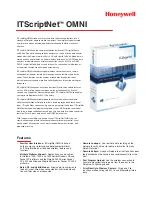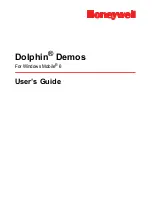
•
Economical processing
RDF conserves resources at both sites. The extractor typically uses 1% of the resources used
by the application on the primary and 4% of the Expand resources. On the backup system
the cost of an updater process replicating an update operation is typically 15-25% of the
original cost to do the operation on the primary system.
On the primary system RDF uses just one process (the extractor) per audit trail to read and
transmit audit records to the backup system. The extractor process automatically filters out
any audit records not relevant to the backup database.
On the backup system RDF stores and applies all audit records without using any primary
system resources.
RDF helps balance the load between the primary and backup systems. For example, to reduce
the application load on the primary system, you can perform database queries on the backup
system; RDF does not, however, guarantee database consistency while changes are being
processed for a transaction.
•
Access to Consistent Backup Databases
There are two ways to quiesce the backup database in a logically consistent state with regard
to transaction boundaries: stop TMF on the primary system or use the TIMESTAMP parameter
in a STOP UPDATE command (referred to as a stop-update-to-time operation). The latter
allows you to do so without stopping TMF, your applications, or the RDF extractor.
•
Zero Lost Transactions (ZLT)
ZLT is a functional capability that uses mirrored disks to guarantee that no committed
transactions on the primary system will be lost in the event of an RDF takeover by the backup
system.
User Interfaces
To use RDF, you run two online utilities: RDFCOM and RDFSCAN. Both are interactive command
interpreters through which you begin a session and enter requests to the subsystem.
RDFCOM for Subsystem Management and Operations
To manage, operate, and control RDF, use the RDFCOM utility. You can issue commands to:
•
Configure RDF
•
Control RDF operation
•
Obtain status information about RDF regarding database activity on the primary system
and processing on the backup system
Tasks and examples using RDFCOM commands appear throughout the manual. Reference
information for all commands appears in
Chapter 8 (page 187)
.
Scanning the EMS Event Log
RDF writes messages to the EMS event log when any of these events occurs:
•
RDF is initialized
•
RDF is started or stopped
•
Updating is started or stopped
•
RDF issues an informational, warning, or error message (including RTD warning messages)
•
An RDF process takeover occurs
•
Control switches from the primary to the backup database
•
A NonStop SQL/MP DDL operation using the WITH SHARED ACCESS option is detected
•
An exception record is written
38
Introducing RDF
Содержание NonStop RDF
Страница 68: ...68 ...
Страница 186: ...186 ...
Страница 260: ...260 ...
Страница 278: ...278 ...
Страница 284: ...284 ...
Страница 290: ...290 ...
Страница 308: ...308 ...
Страница 322: ...322 ...
Страница 336: ...336 ...
Страница 348: ...348 ...
Страница 464: ...464 ...
Страница 478: ......
















































